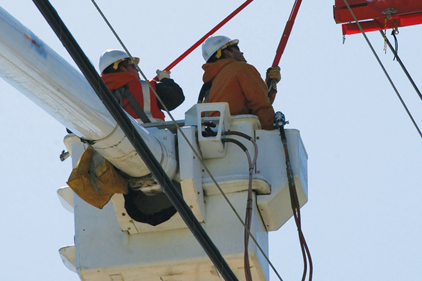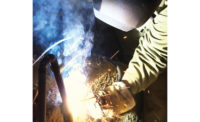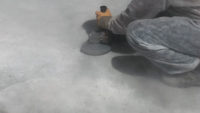Generally, the rule revises this standard for consistency with corresponding overall industry standards and requirements. It clarifies and expands the employer’s responsibility to provide arc-rated clothing to employees based on reliable workplace hazard assessments, and places responsibility for care and maintenance on the employer, although home laundering is explicitly accepted. Employers must comply with these new requirements by April 1, 2015.
It’s important to note OSHA estimates the updates to this rule will save more than 20 lives and prevent 118 serious injuries each year.
Next steps for compliance
OSHA’s changes are generally embraced as much-needed measures to better protect the men and women who work on or near electric power lines. Now that the final rule has been published, employers should take swift action to:
1. Conduct the proper hazard analyses and incident energy calculations.
Employers must make reasonable estimates of incident energy by January 1, 2015, and provide protective clothing and related PPE for arc-flash protection by April 1, 2015.
Although the changes pertaining to arc-rated clothing will not be enforced until April 1, 2015, employers should schedule and prepare for the required hazard and incident energy analyses, as this information is critical to advancing toward properly protecting employees and ensuring compliance with the new ruling.
2. Identify groups within the company that require PPE under the new rule, as well as items and quantities the organization will require.
Based on the information gathered in step one, employers will need to provide head-to-toe FR clothing for all hazards greater than 2 calories or for work above 600 volts. This mandate for full body protection means that workers will now be required to wear FR pants, balaclavas or face shields, boots, and gloves — in addition to FR shirts and jackets already commonly provided.
3. Engage an arc-rated clothing solution provider, and do so well in advance.
A critical path to compliance is determining and implementing the service solution that is the best fit for the employer’s unique needs. OSHA acknowledges considerable flexibility in the approaches employers can use to satisfy PPE requirements, and makes several statements indicating support of an allowance-based FR clothing program.
OSHA’s assessment of the cost to employers is based on “a cost of $1,534.00 per employee for eight sets of flame?resistant clothing … or on an annualized cost of approximately $452.88 per employee” (p. 287); accordingly, an allowance program whereby employees are provided with a one-time new hire allowance of $1,534 and an annual allowance of $455 represents a straightforward approach to meeting the new requirements.
Allotment programs and programs that combine allowances with allotments will help bridge the gap to the new requirements.
Do not wait to engage an arc-rated clothing supplier, as the ruling will significantly increase demand for arc-rated items and the effects will be felt throughout the supply chain. The last time an FR clothing PPE standard was issued was in 2010, and there were significant industry-wide shortages.
4. Partner with selected arc-rated clothing supplier to develop resources and plans for teaching and enforcing proper care and maintenance.
Under the new ruling, OSHA clarified its stance that FR and arc-rated clothing should reasonably and appropriately be treated as personal protective equipment (PPE). This designation reinforces the employer’s responsibility to provide, pay for and retain ultimate responsibility for care and maintenance of arc-rated clothing. OSHA clearly indicates that “the responsibility for maintaining PPE rests squarely with the employer under existing OSHA standards” (p. 187).
While the designation of FR clothing as PPE requires additional employer oversight, OSHA specifically states in the preamble that it “is not prohibiting home laundering of FR and arc-rated clothing” (p. 187). Whether employers take advantage of the convenience and cost effectiveness of home laundering or pay for industrial laundering, employers must train their employees in proper care and maintenance techniques. For both home and industrial laundry, OSHA is clear that the employer must inspect the clothing on a regular basis to ensure that it is not in need of repair or replacement.
Employers should develop and plan to provide training and resources to employees. A straightforward approach to ensuring employees’ arc-rated clothing is properly cared for and maintained is to provide and conduct a PPE inspection at each job briefing. To maximize the efficiency of this solution, experienced FR clothing suppliers can partner with employers to “train the trainers.”
The role of arc-rated clothing suppliers
The 1910.269 ruling contains a great deal of information. To help employers understand how protective requirements and employer responsibilities are changed under the new rule, arc-rated clothing suppliers should:
. Be thoroughly familiar with the contents, requirements and implications of the ruling as it applies to arc rated/FR clothing.
. Help employers understand their responsibilities under the new ruling, how to properly protect employees, and how to adapt their current protective clothing programs.
. Provide educational and informational resources to help employers and their organizations gain compliance with the new requirements.
. Provide guidance and tangible plans for executing the changes within required timeframes. With sufficient notice, arc-rated clothing suppliers should be able to manage demand and ensure customers are properly protected and compliant within a reasonable timeframe.
. Provide straightforward care and maintenance instructions and resources to support employers as they, in turn, educate employees and enforce care and maintenance standards.
. Have the flexibility to provide:
• Boots, balaclavas/ face shields, and hand protection alongside arc rated shirts, pants, coveralls, and outerwear.
• A variety of flexible service solutions to fit employers’ individual needs.



